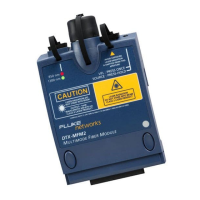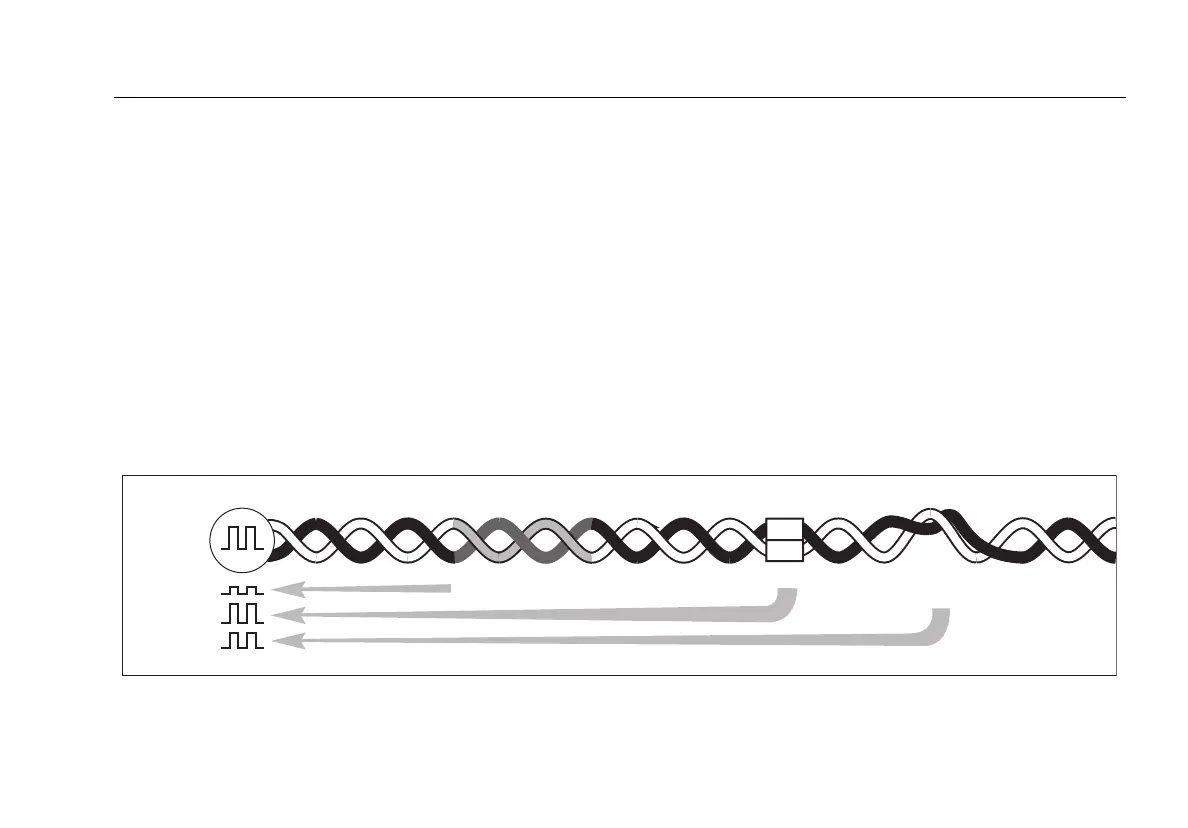Certifying Twisted Pair Cabling
Twisted Pair Autotest Results
3-25
3
Return Loss
Return loss is the difference between the power of a
transmitted signal and the power of the signals reflected
back. The signal reflections are caused by variations in the
cable’s impedance. Figure 3-18 shows some common
sources of reflections that create return loss.
High return loss means the cabling reflects very little of the
transmitted signal back to the source. High return loss is
especially important for high-speed systems, such as Gigabit
Ethernet. The bi-directional (full-duplex) transceivers used
in these systems use directional couplers to distinguish
between incoming and outgoing signals. The couplers may
interpret strong reflected signals as incoming data,
resulting in data errors.
A return loss plot indicates how well a cable’s impedance
matches its rated impedance over a range of frequencies.
Figure 3-19 describes the return loss plot.
For return loss failures, the testers diagnostic screens (
J
Fault Info) may show more than one possible cause for the
failure. In this case, you can use the HDTDR analyzer results
to further diagnose the problem. See page 6-12 for details.
Note
For ANSI/TIA/EIA-568-B.2-3 and ISO/IEC 11801:2002
6.4.2 standards, return loss is not evaluated where
insertion loss at the same frequency is less than 3
dB. If insertion loss never exceeds 3 db, return loss
results are marked with an i on the tester and an
N/A in LinkWare reports.
amd93f.eps
Figure 3-18. Sources of Return Loss
Signal
source
Kinks and other
distortions
ConnectionsVariations in materials
and construction
Reflected
signals

